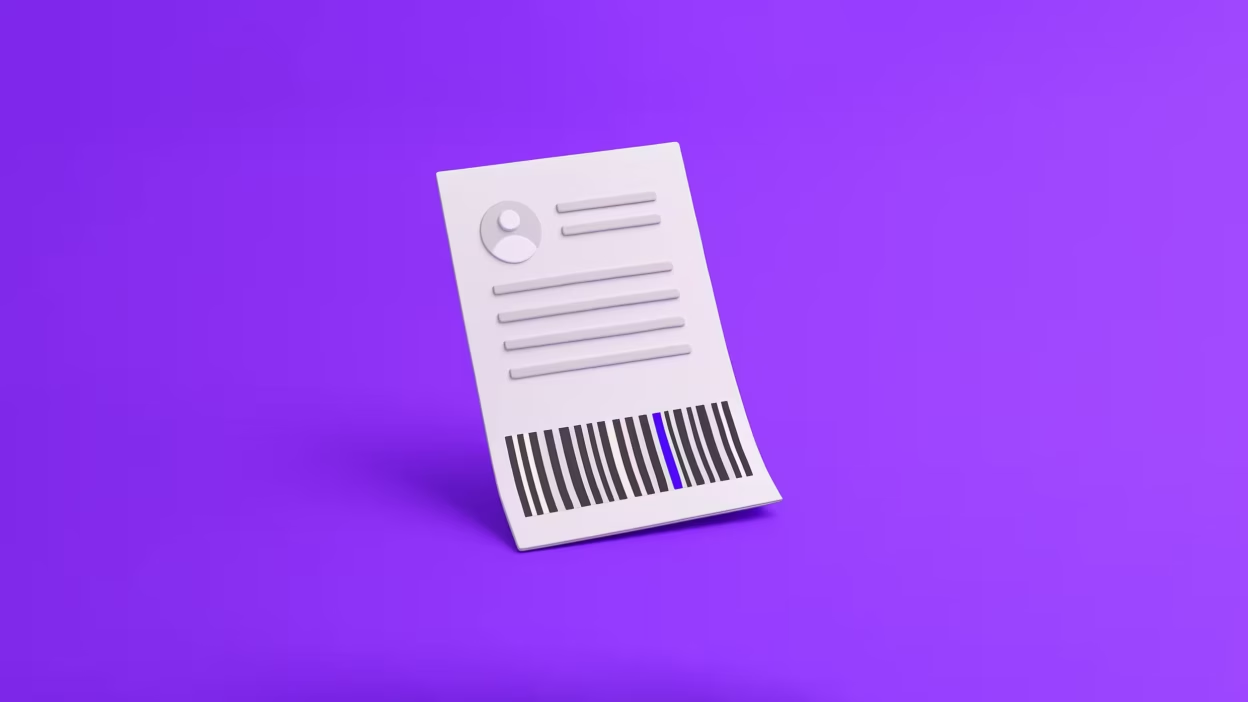Let’s get one thing straight before we dive in: if your resume isn’t getting through the Applicant Tracking System (ATS), it’s not even getting in front of a human. And yeah, that sucks. But it’s the reality of applying to data jobs today. Whether you’re gunning for your first role as a data analyst or shifting from Excel warrior to Python pro, if your resume doesn’t speak fluent ATS, it might as well be written in crayon.
But here’s the part no one tells you: you don’t have to game the system—you just have to speak its language.
Not keyword-stuffing. Not copy-pasting job descriptions. Just a few clean, thoughtful choices that make the difference between “Application Received” and “Let’s talk.”
Let’s break it down. No fluff. No templates that make you sound like a “results-oriented professional with excellent communication skills.” Just real talk on how to make your data resume actually land.
Yes, the ATS Is Real. No, It’s Not Out to Get You.
Before we go all-in on formatting and phrasing, let’s clear the air.
ATS is just software that companies use to filter resumes. It parses your document, extracts details, and ranks it based on keywords and relevance. Think of it as a fussy librarian trying to organize thousands of resumes into tidy little stacks.
It’s not always smart. It won’t appreciate your creative layout. It doesn’t care about your carefully chosen font. And it definitely doesn’t decode icons or text boxes.
The point? Your resume needs to be readable by a dumb robot and a smart recruiter—at the same time.
That’s the dance. Now let’s learn the steps.
Keep It Simple. Seriously.
You know how in data cleaning, you always want raw, structured input? Same here.
Forget fancy templates from Canva. Skip the multi-column layouts. Avoid graphics, logos, or that cute little pie chart showing your “SQL proficiency” (which is nonsense anyway—what does 85% even mean?).
Your layout should be:
- One column
- Left-aligned
- Black text, white background
- Standard fonts (Calibri, Arial, Times New Roman if you’re feeling traditional)
- Sections clearly labeled: “Experience,” “Education,” “Skills,” and optionally “Projects” or “Certifications”
Think boring. Think Google Docs default. You’ll hate how it looks. But the ATS? It’ll eat it up.
Your Title Should Match the Job Title (Yes, Really)
Okay, this feels weird, but hear me out.
If the job is for a “Data Analyst” and your resume headline says “Business Intelligence Enthusiast” or “Analytics Professional,” the ATS may shrug and pass. It’s looking for exact matches.
So do this instead:
- Add a line at the top:
Data Analyst | SQL • Python • Tableau - Or use the job title in your summary:
Aspiring Data Analyst with hands-on experience in SQL and Excel for reporting and automation.
It’s not about lying. It’s about mirroring the language they’re using so the system recognizes you as relevant.
Real talk: Hiring is lazy. Help them help you.
Bullet Points Are for Results, Not Job Descriptions
This one’s personal for me.
When I applied to my first analytics role, I thought, “I’ll just list what I did, right?” So I had lines like:
“Responsible for generating weekly reports using Excel.”
Yawn.
What you should do is show impact. Show that you did something that made someone’s day easier, saved time, or helped a decision.
Same job, reframed:
“Automated weekly sales reports in Excel, reducing manual work by 4 hours per week.”
That hits different.
And even if you’re early in your career, you can still write:
“Cleaned and analyzed survey data using Pandas to uncover insights on customer churn.”
You didn’t change the world. But you showed you did something real, and that’s enough.
Keywords: Use Them Naturally (Not Like a Maniac)
Here’s the trap: you read that ATS systems screen for keywords. So you think, “Aha! I’ll just dump every data-related word I know into my resume!”
And now you’ve got a Skills section that looks like:
Skills: Python, R, SQL, NoSQL, MySQL, PostgreSQL, MongoDB, Spark, Hadoop, Hive, Azure, AWS, GCP, Excel, VBA, Tableau, Power BI, D3.js, Looker, Superset, matplotlib, seaborn, scikit-learn, TensorFlow…
Whoa. Take a breath.
Here’s the rule of thumb: only list tools you’ve used enough to be asked about in an interview. If you can’t confidently answer “How did you use that tool on a project?”—don’t list it.
Then, make sure those skills also show up in your experience or project bullets. The ATS weighs keywords more heavily when they’re part of real actions.
Example:
“Built interactive Tableau dashboards to track daily warehouse metrics.”
Much better than just name-dropping “Tableau” in a skills list.
Projects Are Your Secret Weapon (If You Do Them Right)
Especially if you don’t have formal data job experience, projects are where you prove your chops.
But don’t just say:
“Analyzed COVID data using Python.”
That’s like saying “I ate food.” Okay… and?
Here’s a better version:
“Used Python (pandas, matplotlib) to clean and visualize COVID-19 case trends across states; published insights in a Jupyter Notebook with narrative explanations and charts.”
You showed tools, outcomes, and that you can communicate.
Pro tip: Add a GitHub link only if the repo is clean, readable, and documented. If your notebook looks like a spaghetti mess of df1, df2, df3, maybe clean it up first.
Education and Certifications: Put Them in Their Place
If you’re early in your career, your degree might be front and center. That’s fine. Just make it quick.
Example:
B.A. in Economics – University of Whatever, 2022
Relevant coursework: Statistics, Econometrics, Data Analysis
Don’t list every class. Just the ones that signal you’ve dealt with data.
Got certifications? Awesome. Just don’t overhype them.
Google Data Analytics Certificate – Coursera, 2023
Completed hands-on projects using SQL and Tableau
Short, sweet, and to the point.
Summary Section: Optional, But Powerful If Done Right
Most summaries are garbage. Sorry. It’s true.
If yours says “Motivated team player with strong attention to detail,” just delete it.
But if you want to write one that actually works, try something like this:
Aspiring data analyst with hands-on experience in SQL, Excel, and Python. Built dashboards and automated reports in personal projects and freelance gigs. Background in business operations, strong communicator, eager to solve messy data problems in real-world settings.
See that? No fluff. Just signal.
Final Sanity Checks Before You Hit Send
Let’s call this the pre-launch checklist. These are little things that matter more than you think:
- Save as a PDF (unless the job says otherwise)
- Name the file like a human:
Firstname_Lastname_Resume.pdf - No typos. Seriously. Have someone else read it.
- Dates and formatting are consistent
- No passive language like “responsible for”
- 1 page. Yes, even if you’ve done a lot.
If you’re thinking, “But I have two pages of experience!”—trust me, no one’s reading it. Trim the fat. Focus on relevance.
My First Resume Got Me Ghosted. Then I Got Smart.
Confession: my original resume? A mess.
Fancy two-column layout. Circular bar charts for skills (I know, I know). Buzzwords. No metrics. No projects. Just… fluff.
It got me nothing. Not even rejections. Just silence.
Then I rebuilt it from scratch. Plain layout. Projects front and center. Bullet points that actually said something. And I tailored each one slightly to the role.
A week later, I had three interviews. One turned into my first data job.
So yeah, I’ve learned the hard way—and you don’t have to.
tl;dr — Make the Robot and the Human Happy
If you want to build a resume that gets past the ATS and makes a real person stop and read, do this:
- Use a clean, simple layout (ditch the design flair)
- Match the job title in your resume if you can
- Write results-driven bullet points, not task lists
- Use keywords naturally—in both skills and descriptions
- Show real projects with tools, outcomes, and links if possible
- Trim the fluff. Cut vague phrases. Keep it real.
Remember: you’re not trying to prove you know everything. You’re proving you can do real work, think clearly, and grow fast.
That’s what hiring managers are actually looking for.
And now? You’ve got a resume that says exactly that.





